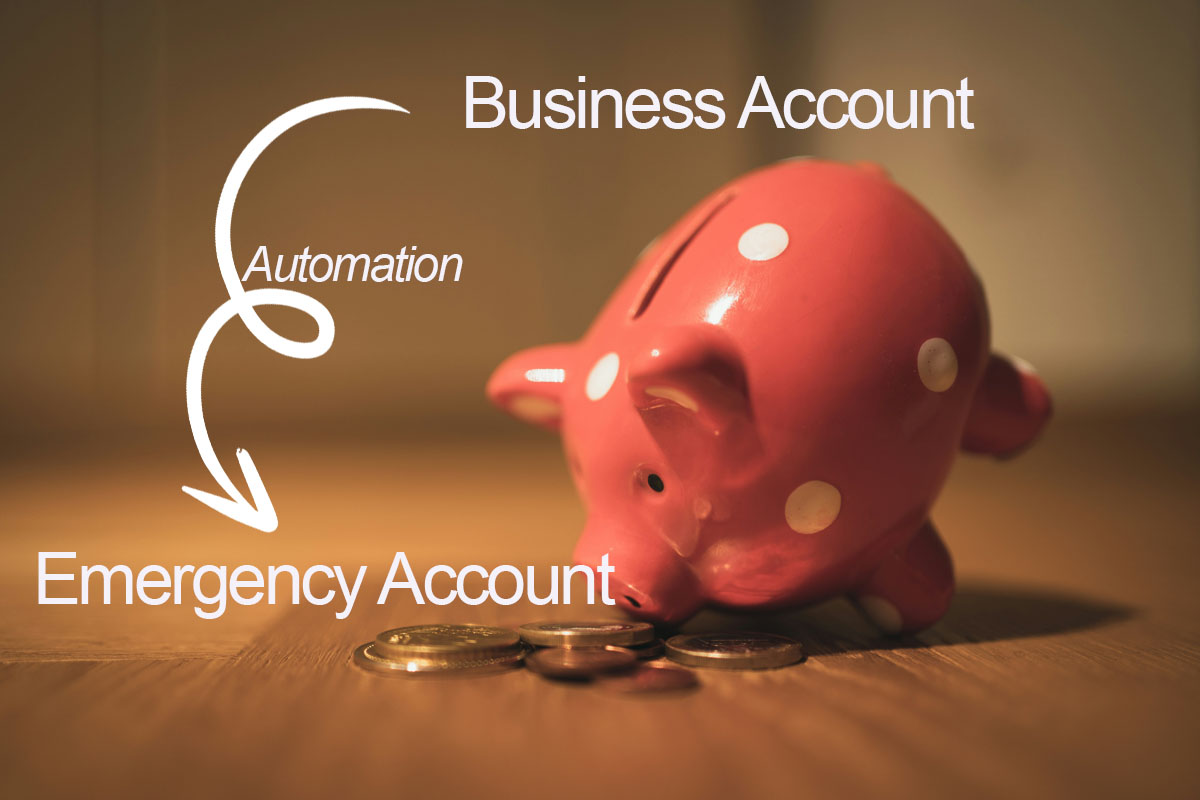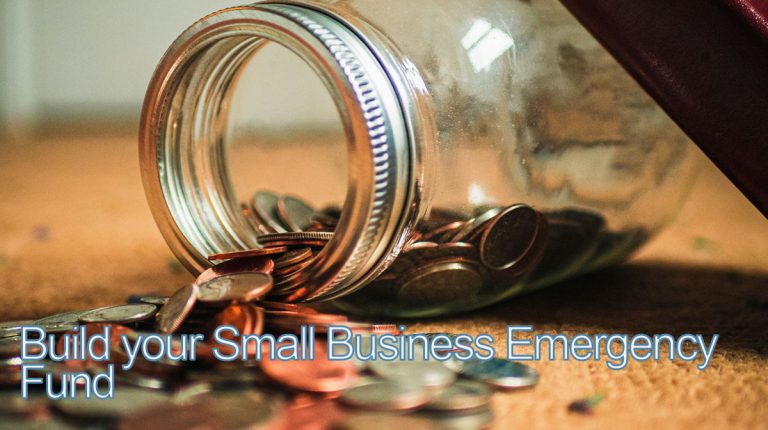As a small business owner, one of the most crucial financial safety I wanted to establish for myself is an emergency fund. This fund acts as a financial cushion, allowing me to navigate unforeseen challenges without jeopardizing my business operations or personal financial stability. Whether it’s a sudden drop in sales, unexpected repairs, or a global pandemic, having an emergency fund ensures that you can weather the storm with confidence and resilience. In this blog post, I’ll explore the importance of an emergency fund, how to build one, and practical tips for maintaining it.
Why an Emergency Fund is Essential
Running a small business comes with a unique set of challenges and uncertainties. Unlike larger corporations, small businesses often operate with tighter margins and less access to credit. An emergency fund provides a critical buffer that can help you manage cash flow, cover unexpected expenses, and keep your business afloat during tough times. Here are a few key reasons why an emergency fund is essential:
- Financial Stability: An emergency fund provides a financial safety net that helps maintain stability during periods of low revenue or unexpected expenses.
- Operational Continuity: With a reserve of funds, you can ensure that essential operations continue even when facing financial hurdles.
- Stress Reduction: Knowing that you have a financial cushion can reduce stress and allow you to make more rational business decisions. And as small business owners, we could all use a little less stress in our lives.
- Opportunity Seizure: An emergency fund can also serve as an opportunity fund, allowing you to capitalize on unexpected business opportunities.
Steps to Build an Emergency Fund
Building an emergency fund requires careful planning and disciplined financial management. Here are the steps to help you get started:
1. Assess Your Financial Situation
Before you can start building your emergency fund, it’s essential to understand your current financial situation. Review your business’s income, expenses, and cash flow. Identify any areas where you can reduce costs or increase revenue. This assessment will give you a clear picture of how much you can realistically save each month.
You may want to use a software application like Quicken to help assess your financial situation.
2. Set a Savings Goal
Determine how much you need to save for your emergency fund. A common recommendation is to have three to six months’ worth of operating expenses saved. However, the exact amount will depend on your business’s specific needs and risks. Consider factors such as the volatility of your industry, fixed and variable costs, and personal financial obligations.
3. Create a Budget
Develop a budget that includes a dedicated line item for your emergency fund. This budget should outline your income, expenses, and savings goals. By creating a budget, you can ensure that you consistently allocate funds towards your emergency savings. You can use a finance management application or plain old Excel, which I’ve used in the past.
4. Automate Your Savings
Automating your savings can help you stay disciplined and ensure that you regularly contribute to your emergency fund. Set up automatic transfers from your business checking account to a separate savings account designated for emergencies. This way, you won’t be tempted to use the funds for other purposes.

5. Monitor and Adjust
Regularly review your budget and savings progress. Adjust your contributions as needed based on changes in your business income or expenses. Monitoring your financial situation will help you stay on track and make any necessary adjustments to meet your savings goals.
Practical Tips for Maintaining Your Emergency Fund
Building an emergency fund is only half the battle; maintaining it requires ongoing effort and discipline. Here are some practical tips to help you keep your emergency fund intact:
1. Keep the Fund Separate
It’s crucial to keep your emergency fund in a separate account from your regular business checking or operating accounts. This separation reduces the temptation to dip into the fund for non-emergency expenses and helps ensure that the money is available when you truly need it.
2. Define What Constitutes an Emergency
Establish clear criteria for what qualifies as an emergency. This definition should include unexpected events that significantly impact your business operations, such as equipment failures, natural disasters, or sudden revenue losses. Having a clear understanding of what constitutes an emergency will help you use the fund appropriately.
3. Replenish the Fund Promptly
If you need to use your emergency fund, make it a priority to replenish it as soon as possible. Adjust your budget and savings contributions to rebuild the fund and restore your financial safety net.
4. Regularly Review and Update Your Savings Goal
Your business’s financial situation and needs may change over time. Regularly review your savings goal and adjust it based on factors such as business growth, changes in operating expenses, and industry trends. Keeping your savings goal up to date ensures that your emergency fund remains adequate for your needs.
5. Invest Wisely
While it’s essential to keep your emergency fund accessible, consider investing a portion of it in low-risk, interest-bearing accounts or instruments. This approach can help your fund grow over time, providing an additional financial cushion. However, ensure that the investments are liquid and can be easily accessed in an emergency.
I wouldn’t use a GIC, RRSP or TFSA in this scenario as there are different implications for access funds in these accounts. While a non-registered investment or high-interest savings account aren’t ideal long term options, they may fit you will in this scenario.
Case Study: Building an Emergency Fund
Let’s consider a hypothetical case study of a small business owner, Sarah, who runs a local bakery. Sarah’s bakery has been in operation for five years, and she wants to build an emergency fund to safeguard her business against unforeseen challenges.
Assessing Financial Situation
Sarah reviews her bakery’s financial statements and identifies her average monthly operating expenses, including rent, utilities, salaries, and supplies, totaling $10,000. She decides to aim for a six-month emergency fund, totaling $60,000.
Setting a Savings Goal
Sarah sets a savings goal of $60,000 and creates a plan to save $1,000 per month. She knows this will take her five years to achieve but feels it’s a realistic and achievable target given her current revenue and expenses.
Realistic and achievable need to be key traits for your emergency savings plan. If it’s not realistic, you’ll get despondent with the plan and abandon it easily.
Creating a Budget
Sarah revises her budget to include the $1,000 monthly contribution to her emergency fund. She identifies areas where she can cut costs, such as negotiating better rates with suppliers and reducing unnecessary expenses.
Automating Savings
Sarah sets up an automatic transfer of $1,000 from her business checking account to a separate savings account designated for emergencies. This automation ensures that she consistently saves each month without having to think about it.
Monitoring and Adjusting
Sarah regularly reviews her budget and savings progress. After six months, she notices an increase in revenue from a new product line and decides to increase her monthly savings contribution to $1,500. This adjustment helps her reach her savings goal faster.
Final Take Aways
Building an emergency fund is a critical step in ensuring the long-term success and stability of your small business. By assessing your financial situation, setting a realistic savings goal, creating a budget, automating your savings, and maintaining the fund with discipline, you can protect your business from unexpected challenges and seize opportunities with confidence.
Remember, the key to a successful emergency fund is consistency and dedication. Start small, stay committed, and watch your financial safety net grow over time. With a well-funded emergency reserve, you’ll be better equipped to navigate the uncertainties of running a small business and achieve lasting success.

